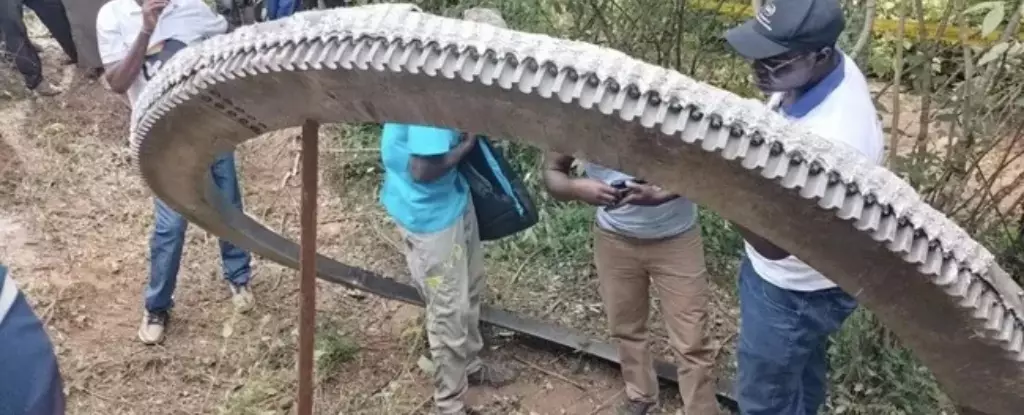The mysteries of outer space have always fascinated humanity, but on one fateful Wednesday, this fascination took an alarming turn when Mukuku Village in Kenya found itself in the spotlight due to an unexpected incident. Around 3 p.m. local time, a massive metallic ring weighing approximately 1,100 pounds and spanning 8 feet in diameter crash-landed in the village, as reported by the Kenya Space Agency. While the agency was quick to reassure the community that there were no injuries and that the debris posed no immediate threat, this incident raises critical questions about the growing danger of space debris and its management.
This unexpected visitor from space has drawn attention to the complex issue of space debris, a problem that is becoming increasingly pressing as more nations and private companies engage in space exploration. Maj. Alois Were from the Kenya Space Agency described the object as “possibly from a rocket separation stage,” yet the origins of the metallic ring remain a mystery. Officials stated that they would be collecting fragments from the impact site for detailed analysis in an effort to trace back to the responsible entity, whether that be a government or private space organization.
The collection and analysis of these fragments are not mere procedural tasks; they also underline the serious implications of possessing space debris. The authorities noted the intention to utilize “existing legal mechanisms under international law” to hold responsible parties accountable. This highlights a lingering concern: as orbital launches increase, the legal frameworks for managing such incidents remain murky and often untested.
Space debris is not a new phenomenon. Since humans initiated the practice of sending objects into space in the late 1950s, there has always been a risk of these objects returning unpredictably to Earth. History provides chilling examples of near-misses, such as the incident in March when a two-pound piece of debris from the International Space Station crashed through the roof of a family home in Florida, resulting in a lawsuit against NASA. These occurrences, while rarer, underscore the potential danger that space debris poses to everyday life on Earth.
The ascent of global space activities cannot be ignored. Between 2008 and 2017, countries worldwide conducted an average of 82 orbital launches annually, but this figure surged to an average of about 130 launches per year between 2018 and 2022. Last year alone, 2024 broke records with approximately 250 launches. Such an increase in launches not only elevates the risk of debris returning to Earth but also compounds an already concerning situation merely by increasing the overall “space clutter.”
The accumulation of space debris consists of a wide range of objects, from defunct satellites to smaller pieces no larger than a grape, all of which travel at astonishing speeds — faster than a bullet. This multitude of debris poses various threats not only to active satellites but also to manned spacecraft. Notably, experts like physicist Thomas Berger emphasize the risk of catastrophic collisions that could generate a “chain reaction,” potentially rendering vast regions of space unusable.
To mitigate these concerns, international cooperation and innovative solutions to track and manage space debris are essential. As the public continues to witness incidents like the recent landing in Mukuku Village, the conversation around space debris and its implications for humanity must evolve. The danger lies not only in immediate threats but also in long-term consequences if space continues to become increasingly cluttered.
The recent incident in Mukuku Village serves as an urgent reminder of the precarious relationship humanity has with space. As we look to the future of exploration and the continued growth of commercial space ventures, the urgent need for effective legal frameworks, responsible management practices, and cooperative international efforts becomes clear. With each launch, the stakes grow higher, making it essential for stakeholders to prioritize solutions that will ensure the safety of both our skies and the space beyond. We must heed this call to action before the cosmos unforeseen consequences of our advancements come crashing down to Earth.

